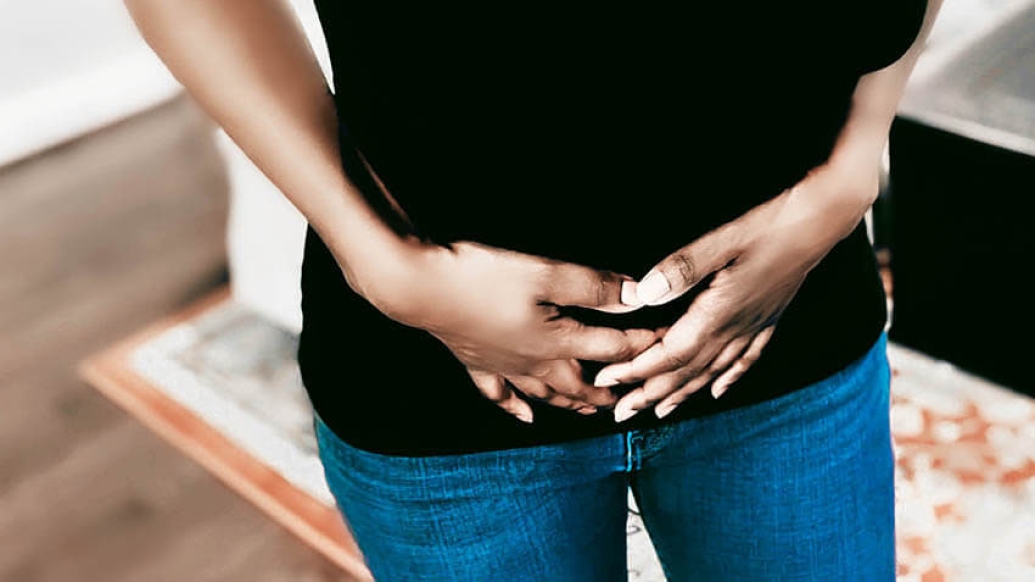Sixty to sixty-five percent of women develop fibroids by age 50. While common, they’re often not discussed.
1:30 PM
Author |

Women play a critical role in maintaining the health of their families, however, when it comes to their own well-being, many suffer in silence while battling unique health concerns. Whether it's recovery after having a baby, incontinence or autoimmune issues, women deal with conditions that are difficult to discuss.
One of those is fibroids.
Leiomyomas, or "fibroids" as they are commonly known, are fibrous tumors that grow in the wall of the uterus, and they're almost always non-cancerous. Women can have a single fibroid or multiple fibroids and they can range from the size of a seed to the size of a melon. Because so many women are affected by them, and because they're the leading cause of hysterectomies in the United States, fibroids are an important public health concern.
LISTEN UP: Add the new Michigan Medicine News Break to your Alexa-enabled device, or subscribe to our daily updates on iTunes, Google Play and Stitcher.
While fibroids are common, they're often not discussed, explains Erica Marsh, M.D., chief of reproductive endocrinology and infertility at the Center for Reproductive Medicine at Michigan Medicine's Von Voigtlander Women's Hospital.
If you're living with fibroids, or suspect you might have fibroids, here are seven things Marsh says you need to know:
1. Who gets fibroids and what causes them?
Fibroids become more common as women age and are most common in women/those assigned female sex at birth in their 40s and early 50s. After menopause, fibroids usually shrink.
"Fibroids are a disease of all women, but African American women have a higher prevalence for fibroids, with 80–90 percent being diagnosed with the condition," says Marsh. "African American women are also diagnosed with fibroids at a younger age, with more than 25 percent already developing fibroids between the ages of 21–30."
Women who are obese are at higher risk of developing fibroids and there is a link between fibroids and women who consume large quantities of red meat.
No one knows what causes fibroids. Research indicates that fibroids are controlled by the hormones estrogen and progesterone and that there is a hereditary component. Having a family member with fibroids can also increase your risk. However, you shouldn't discount symptoms simply because you don't have a family member with fibroids.
2. What are the symptoms of fibroids?
Many women who have fibroids don't experience symptoms, but those who do often have difficulty living with them. Common symptoms include:
-
Pelvic pain and heavy menstrual bleeding, which can lead to anemia or the need for a blood transfusion.
-
Pressure on the bladder, causing frequent urination.
-
Pressure on the rectum, causing constipation and back pain.
-
Bloating, which can be caused by a large fibroid pushing into the stomach area.
"In addition to the many physical symptoms, women are impacted emotionally by living with fibroids," says Marsh. "Many women report challenges with depression, anxiety, reduced quality of life and distorted body image."
3. How much bleeding is too much?
The distortion of the endometrial cavity or womb created by a fibroid can cause the heavy vaginal bleed. But how much bleeding is too much? Any amount of bleeding that interferes with your daily quality of life is a concern. Other red flags include:
-
Bleeding between periods and having more than one period in a month.
-
Having a period that lasts longer than seven days.
-
Passing blood clots that are larger than the size of a golf ball.
-
Soaking multiple pads and tampons in a short amount of time, for example, soaking through menstrual hygiene products every hour.
If you're experiencing these symptoms, it's time to talk to your doctor.
While fibroids won't kill you, they can significantly impair a woman's quality of life … Women should feel empowered to ask questions, to get answers, and to stop suffering in silence.Erica Elizabeth Marsh M.
4. How are fibroids diagnosed?
Typically, your doctor can feel the fibroid during an ordinary pelvic exam. To confirm the location and size of the fibroid, your doctor may request an ultrasound or other imaging tests like an MRI or a hysterosalpingography, which is an X-ray used to view the inside of the uterus and fallopian tubes. Lab tests, like a complete blood panel or other blood tests, can also be helpful in diagnosing conditions caused by fibroids like anemia.
5. How are fibroids treated?
Since most women don't have symptoms, most don't require treatment. For those who do require treatment, there's no one-size-fits-all option. Treatment can range from medications to surgery, so be sure to talk to discuss your options with your doctor.
MORE FROM MICHIGAN: Sign up for our weekly newsletter
"Each patient is unique and each uterus is unique so treatment should be geared toward a woman's specific symptoms," says Marsh. "There are medical, radiological, and surgical treatments that are based on the size and location of the fibroid as well as a women's reproductive goals."
6. Are fibroids cancerous?
Uterine fibroids, by definition, are noncancerous. In very rare cases, women develop a leiomyosarcoma, which is a cancer that can affect the uterus. Clinicians don't believe that leiomyosarcoma can develop from fibroids, and having fibroids does not increase your risk of developing a cancerous fibroid.
Fibroids also don't appear to increase the risk of other cancers of the uterus. Since fibroids typically shrink after menopause, postmenopausal women should see their doctor right away if they notice or feel any new, fast-growing tumors in their uterus.
7. How do fibroids affect fertility and pregnancy?
Most women with fibroids have normal pregnancies. If there are problems with the pregnancy, they usually arise due to the size and location of the fibroid, affecting the type of delivery you may have. In some cases, though, the size and location of the fibroid can interfere with the implantation of the embryo.
"Overall, many women who have fibroids can get pregnant," says Marsh. "We know, however, that the presence of fibroids can be an obstacle in getting pregnant. In some cases, it's possible that removal of the fibroid could help women achieve pregnancy."
Fibroids cost the U.S. billions of dollars in lost work days, treatment, medical complications and surgeries, but it's still a condition many are hesitant to discuss. Marsh hopes to change this by bringing awareness and getting this condition out in the open.
"While fibroids won't kill you, they can significantly impair a woman's quality of life," says Marsh. "Suffering from the symptoms of fibroids is not a requirement of being a woman. We need to set a higher bar for ourselves. Women should feel empowered to ask questions, to get answers, and to stop suffering in silence."

Explore a variety of health care news & stories by visiting the Health Lab home page for more articles.

Department of Communication at Michigan Medicine
Want top health & research news weekly? Sign up for Health Lab’s newsletters today!





